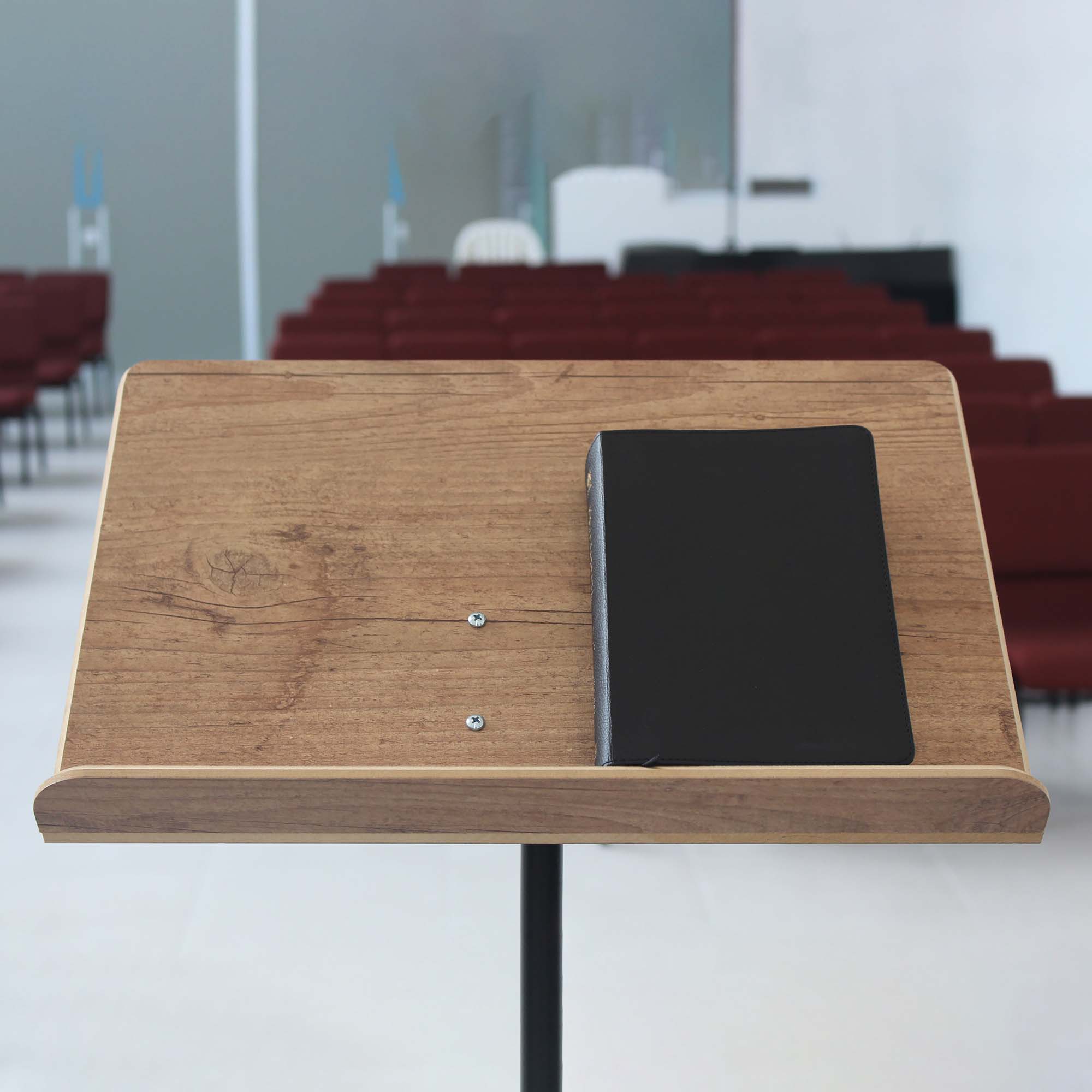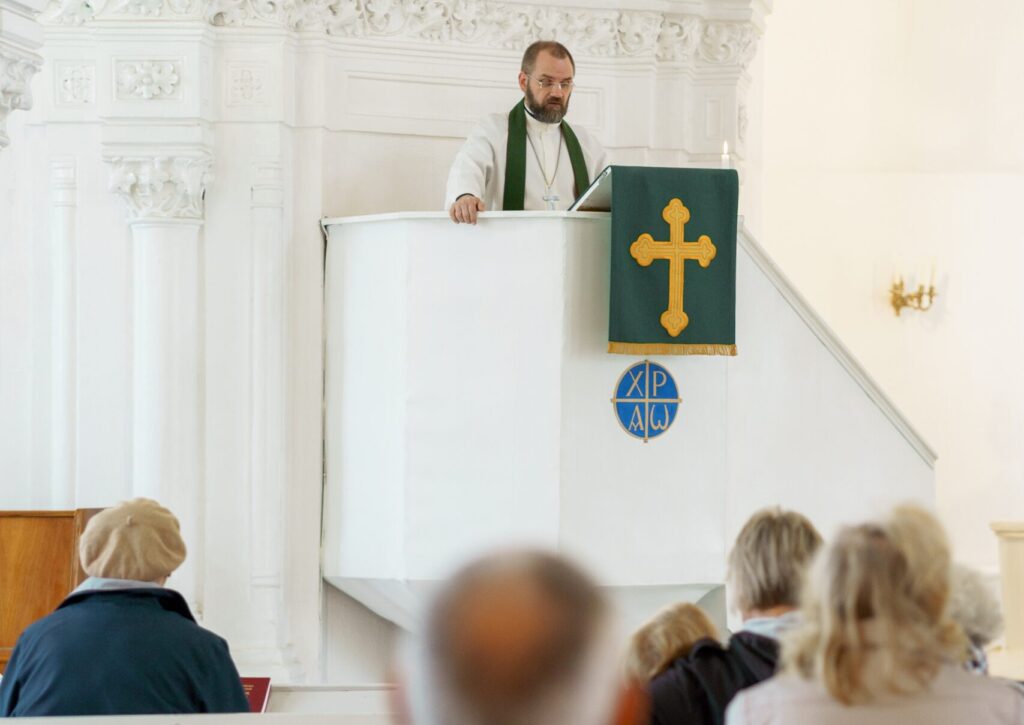
Share this Post
When I was a teen, my preferences for church music differed greatly from that of my church. Whenever I expressed my point of view, I was usually met with the response “There are more important things to focus on in church than worship style.”
They were both so right and so wrong at the same time.
Unless you live under an Amish rock, you’ve all heard or experienced firsthand the debate between modern praise music and hymns, between liturgy and a more organic service style. (Don’t hate me; I don’t choose the buzzwords.)
In my 15 years of doing exactly what I was told not to do (fixating on worship style), I’ve come to the conclusion that old vs new is entirely the wrong debate. Sure, there are those curmudgeons in any church who are immediately opposed to anything that’s not covered in a thick layer of dust—or on the other extreme, churches who seem to balk at any song more than 5 years old—but most of us would benefit more from looking at the why of our traditions.
As we discuss, let’s remember that a tradition doesn’t have merit by how old or new it is. Neither does the number of followers prove the worth of a movement.
A tradition is good only when it is true and useful. It’s important to note too that the usefulness of any observance of tradition is not necessarily timeless, though it’s underlying truth may be. Traditions can wax or wane in their usefulness. Not all of our dearly held traditions are thousands of years old. Some are mere hundreds or less. Every tradition had its inception somewhere, and many traditions are better understood within their own cultural context and time. Making new traditions is okay and even good.
By the end of this article, I’m probably going to have said something to offend every age, so if you’re feeling a little prickly, keep reading; I’ll take your side later.
The Traditional Church
First to my young readers: As it turns out, a lot of thought has gone into structuring the church service throughout the two millennia since its inception. We don’t have to agree with it all, but it would be silly of us to ignore it or take no interest at all. There are reasons behind every tradition in the church. Some of them good, others perhaps a little more flimsy.
There’s a ton that can be written on this topic, so forgive me for moving quickly and only scratching the surface. Some readers may be unsatisfied with the number or nature of the reasons given. I realize that there is far more to each of these traditions than I have space to mention here.
Pulpit
This mammoth piece of church furniture was designed to demonstrate the authority of scripture. When a pastor speaks from the pulpit, he is speaking the very word of God (hopefully). Some traditions used pulpits that towered far above the congregation. This illustrated that God was divinely holy and the congregation was not. This design also allowed the preacher to be heard in large sanctuaries before the days of electronic amplification.

Sitting and Standing
When God’s Word was read, particularly the Gospel, everyone would stand in respect. Similar to how everyone would stand when a king enters the throne room or when the bride walks down the aisle. God’s Word demands our attention.
Liturgy
The constant sitting and standing throughout a service, combined with responsive liturgy and spoken confessions, all emphasized participation in the body of Christ. The church service is not something to be simply watched, but something to take part in. We’re the Body of Christ after all—not concert goers.
The church service is not something to be simply watched, but something to take part in.
Music
The leading of music was often kept simple so it could be accessible in the smallest of congregations. For much of the churches history, organ was used as accompaniment. Piano was seen as too secular—much as drums and electric guitar are viewed in some churches today. Songs were often played slow to allow for the greatest amount of participation. Hymns were chosen that had withstood the test of time and were known by so many.
I could go on about traditions like the eternal flame or the sign of the cross, or vestments, or dress code, but for the sake of length, let’s move on.
The Contemporary Church
To my older readers: I first want to say that different doesn’t always mean worse. We can learn a thing or two from the young, just like they can learn a thing or two (or three) from you.
While some of these more modern church traditions can feel less substantiated due to their newness, that’s not reason in itself to discount them.
Lectern on the Floor
Many modern churches have a slimmed-down version of a pulpit, usually a lectern or music stand—or sometimes nothing at all.
At first glance, this can feel like the Word of God is not being respected or “held high”, but modern churches have good reasons for the change.
The pastor standing on the floor, closer to the congregation, emphasizes that God’s Word has come down to us in the person of Jesus Christ. The Gospel is for all ears. It’s not out of date. It applies to our lives today.
The Gospel is for all ears. It’s not out of date. It applies to our lives today.
The lectern is thin so that the pastor has nothing to hide behind. He is a sinner, just like the members of the congregation. He doesn’t have special higher status with God. The modern pastor’s informal clothing also emphasizes this.
Lastly, a high pulpit is no longer necessary for audibility. Sound systems can amplify the pastor’s voice to be heard in any size of room.
Sitting and Standing
For modern worship music, people usually stand. This is to emphasize the participatory nature of praise. It allows for greater emotional expression, which we see some precedent for in the Psalms.
People often sit for the reading of God’s Word. This allows them to have Bibles open on their laps and to listen more attentively. Hearing and doing what the Word of God says is more important than any outward ceremonial show, such as standing.

Liturgy
Contemporary churches seldom call the elements of their service by this name, but liturgy is present, nonetheless. Often, the pastor or service leader takes the congregation through a journey of confession and absolution throughout the service with prayer, music, and the occasional spoken creed or confession. Time is given after certain songs for silent prayer and personal confession of sin.
Music
Young people love music. Many feel the closest to God when singing. They follow Old Testament practices of including talented instrumentation in their praise music. Instrumentation is often loud to display genuine excitement. Their dissatisfaction with old music has led to a resurgence of theologically rich hymn writing in the last 10 years.
Their dissatisfaction with old music has led to a resurgence of theologically rich hymn writing in the last 10 years.
In Conclusion
You’ve probably noticed by now that I’ve refrained from making many negative statements about either group in this conflict. Of course there are those who are less intentional or less theologically informed in their service planning than I am giving credit for here. To argue against these is to fall into straw man and slippery slope fallacies.
The real point is that both contemporary and traditional churches can, and should, observe their traditions for a reason. Sentimentality is not a good enough reason, but let’s also not discount the comfort of that familiarity. For the older generation, this often comes out in frustrated phrases like: “This is the way we’ve always done it. Why do you have to go and change everything?” For the young, it sounds like: “Why do I have to enter my grandparents’ culture in order to worship God?”
There are factions on either side of the traditional vs. contemporary debate that have left the faithful teaching of God’s Word, and instead give empty platitudes to their congregations in a poor attempt to satisfy souls.
And that’s really what the debate is about. Each side thinks the other has left out what’s most important: Jesus. And too often, both sides are right in this assumption about the other. Modern Church or Traditional Church, we can easily take our eyes off the author and perfecter of our faith. We all do it. Neither side is MORE guilty, but we are all guilty.
The issue of style is not going to resolve itself. There are always going to be grandparents that don’t want to give up nostalgia. There are always going to be young people to push the envelope and practice their dreaded innovation.
But in all that, let’s keep our eyes on Jesus. Let’s take the best of ancient tradition and put our own meaningful spin on it. Let’s be intentional with explaining why we do certain things a certain way, especially to those that are new. Let’s not let any part of our church service become only meaningless habit.
If Jesus is our real focus, I think we may find that the style debate will solve itself. Embrace those traditions (old or new) that communicate the gospel, and let some of the others fall away.
Share this Post
